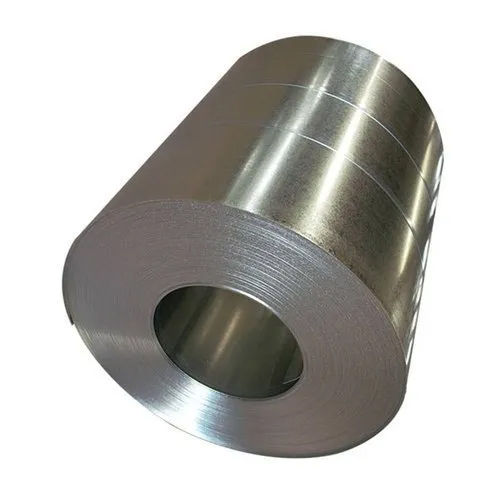ETP Coil
Product Details:
- Usage Industrial & Commercial
- Color Silver
- Product Type ETP Coil
- Surface Treatment Galvanized
- Size Standard
- Material Other
- Technique Cold Rolled
- Click to View more
ETP Coil Price And Quantity
- 5 Ton
- 85 INR/Kilograms
ETP Coil Product Specifications
- Industrial & Commercial
- Other
- Cold Rolled
- Silver
- ETP Coil
- Galvanized
- Industrial
- Standard
- Yes
ETP Coil Trade Information
- 1000 Ton Per Day
- 5 Days
- All India
Product Description
Electrolytic tinplate coil is a type of steel coil that has been coated with a thin layer of tin through an electrolytic process. This process involves immersing the steel coil in an electrolyte solution and passing an electric current through it, which causes tin ions to deposit onto the surface of the steel. This results in a protective layer of tin that provides corrosion resistance and enhances the appearance of the steel.
Tinplate coils are widely used in the packaging industry, particularly for food and beverage containers, as well as for other applications where corrosion resistance and durability are important. The thin layer of tin also makes the steel more easily solderable, which is useful in certain manufacturing processes.
The description of an electrolytic tinplate coil would typically include details such as the thickness of the tin coating, the dimensions of the coil (width, length, and thickness), the steel grade, and any specific surface treatments or coatings applied to the steel before or after the tin coating process. Additionally, the description might include information about the mechanical properties of the tinplate, such as its strength and ductility.
SPECIFICATION
Tin Coating Thickness: Typically measured in either pounds per base box (lb/bb) or micrometers (m), the tin coating thickness indicates the amount of tin deposited onto the steel substrate. Common thicknesses range from 1.1 to 11.2 lb/bb or approximately 0.4 to 2.0 m.
Steel Substrate Thickness: The thickness of the steel substrate, measured in gauge or millimeters (mm), is an important specification that affects the overall strength and durability of the tinplate. Common thicknesses range from 0.13 mm to 0.50 mm.
Coil Width: The width of the tinplate coil, measured in inches or millimeters, determines the size of the sheets or strips that can be produced from the coil. Common widths range from 600 mm to 1200 mm or more.
Coil Weight: The total weight of the tinplate coil, typically measured in pounds or kilograms, is an important consideration for handling and transportation purposes. Common coil weights range from 3 to 10 metric tons or more.
Surface Finish: The surface finish of the tinplate coil can vary depending on the desired appearance and end-use requirements. Common surface finishes include bright, stone, silver, and matte.
Steel Grade: The type of steel used as the substrate for the tin coating can vary depending on the desired mechanical properties and corrosion resistance. Common steel grades include MR (commercial quality), L (low carbon), and D (deep drawing).
Surface Coatings: In addition to the tin coating, tinplate coils may also be coated with other materials such as chromium oxide or organic coatings to provide additional protection or improve adhesion for specific applications.
These are just some of the specifications that may be included in a typical electrolytic tinplate coil specification. Depending on the application and manufacturer, additional specifications related to mechanical properties, dimensional tolerances, and surface quality may also be provided.

Price:
- 50
- 100
- 200
- 250
- 500
- 1000+






 Send Inquiry
Send Inquiry Send SMS
Send SMS Call Me Free
Call Me Free
